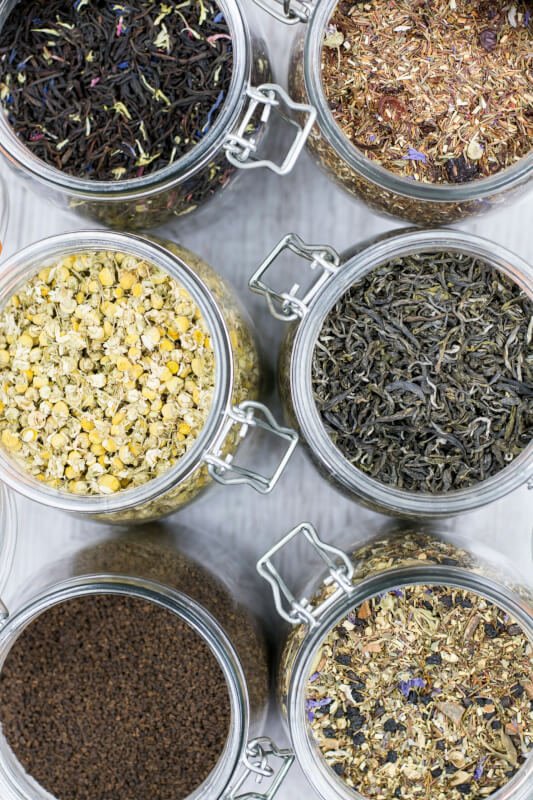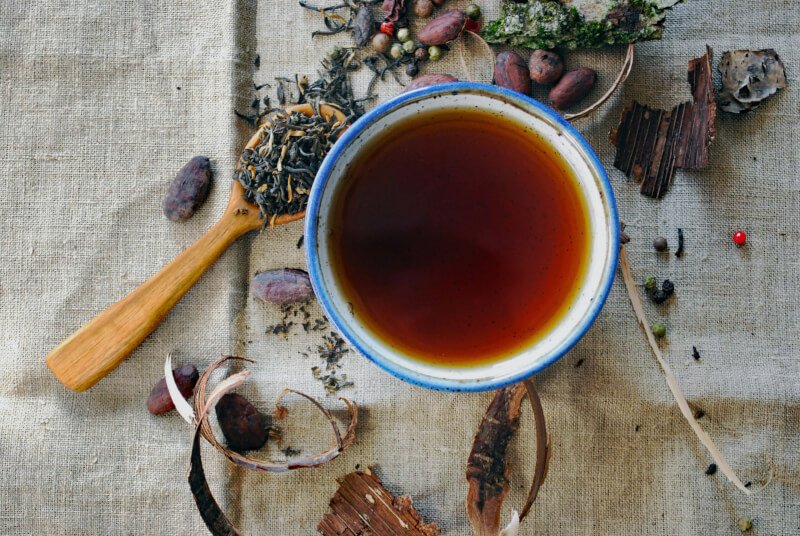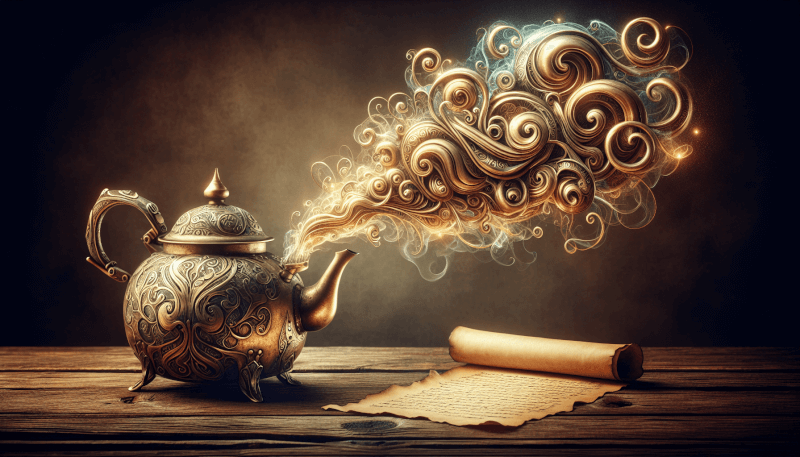In this article, you will discover the art of brewing tea with different infusion times to create customized flavor profiles. Whether you prefer a bold and robust brew or a delicate and subtle flavor, understanding how the infusion time can affect the taste of your tea is essential. By adjusting the steeping time, you can unlock a world of unique and personalized tea experiences. So grab your favorite tea leaves, a cozy teapot, and get ready to embark on a delightful journey of tea brewing mastery.
Understanding the Basics of Brewing Tea
Brewing tea is not just a simple task of pouring hot water over tea leaves. To achieve the perfect cup, it is essential to understand the basics of brewing tea. The process of extracting flavor and aroma from tea leaves depends on various factors, including infusion time. By experimenting with different infusion times, you can create custom flavor profiles that suit your taste preferences. In this article, we will delve into the different types of tea, the importance of infusion time, factors affecting flavor, experimenting with infusion times, enhancing flavor with additives, creating custom flavor profiles, and provide some useful tips and recommendations.
Different Types of Tea
Tea is a versatile beverage that comes in various forms and flavors. The four main types of tea are black, green, white, and oolong. Each type undergoes a different level of oxidation during processing, resulting in distinct flavors and characteristics. Black tea is known for its robust and full-bodied taste, while green tea offers a more delicate and grassy flavor. White tea has a subtle and sweet flavor, while oolong tea falls between black and green tea in terms of oxidation and flavor profile. Understanding the differences between these tea types will help you choose the right one for your desired flavor profile.

The Importance of Infusion Time
Infusion time plays a crucial role in determining the flavor, strength, and aroma of the brewed tea. It refers to the duration for which tea leaves are steeped in hot water. Shorter infusion times generally produce lighter and milder flavors, while longer infusion times result in stronger and more robust flavors. The texture, bitterness, and astringency of the tea can also be affected by the infusion time. It is important to find the right balance to achieve the desired flavor profile.
Factors Affecting Flavor
Several factors can influence the flavor of brewed tea apart from infusion time. The quality and type of tea leaves, water temperature, and water quality all contribute to the final taste of the tea.
Tea Leaves
The quality of tea leaves used significantly impacts the flavor of the brewed tea. High-quality loose-leaf teas tend to produce a more complex and nuanced flavor compared to tea bags. Whole tea leaves allow for better extraction of flavors, while tea bags often contain broken or lower-grade leaves. Additionally, the variety of tea leaves used, such as Darjeeling, Assam, or Sencha, can also influence the flavor profile.
Water Temperature
Water temperature is another critical factor in brewing tea. Different types of tea require different water temperatures to extract their optimal flavors. As a general rule, black teas are best brewed with boiling water, while green and white teas are more delicate and should be brewed with water just below boiling. Oolong teas fall somewhere in between, requiring water that is heated to a specific temperature to achieve their unique flavors.
Water Quality
The quality of the water used can have a significant impact on the taste of the brewed tea. Ideally, filtered or spring water should be used to ensure that impurities and chlorine do not interfere with the flavors of the tea. Tap water with a high mineral content can also affect the taste, so it is important to consider the water quality when brewing tea.

Experimenting with Infusion Times
Now that we understand the factors affecting flavor, let’s explore the different infusion times and their effects on the tea.
Short Infusion Time
Short infusion times typically range from 1 to 2 minutes. This method is ideal for delicate teas such as green and white teas, as well as certain types of oolong teas. The shorter steeping time allows for a milder flavor, preserving the tea’s subtle nuances while reducing bitterness and astringency. It is also a preferred method for those who enjoy a lighter cup of tea in the morning or want to avoid excessive caffeine intake.
Medium Infusion Time
Medium infusion times, ranging from 2 to 4 minutes, are suitable for most black teas and some oolong teas. This method strikes a balance between strength and flavor. The slightly longer steeping time allows for a more robust and full-bodied taste without overpowering the tea’s natural characteristics. This is a popular choice for those who prefer a stronger cup of tea with a rich flavor profile.
Long Infusion Time
Long infusion times, typically 4 minutes or more, are mainly used for black teas and certain herbal teas. This method extracts the maximum flavor and strength from the tea leaves, producing a bold and intense cup. However, it is essential to monitor the infusion time carefully to avoid bitterness and astringency. Long infusion times may not be suitable for all tea varieties, as some delicate teas may become overpowering and lose their subtlety.
Short Infusion Time
Process and Results
When brewing tea with a short infusion time, it is important to use the correct water temperature and ratio of tea leaves to water. For delicate teas like green and white teas, the water temperature should be around 175°F (80°C). Steep the tea leaves in hot water for 1 to 2 minutes, depending on the desired strength. The resulting cup of tea will have a light golden color with subtle, floral notes. Short infusion times preserve the natural flavors of the tea, allowing it to shine without overpowering the palate.
Suitable Tea Varieties
Tea varieties that are well-suited for short infusion times include delicate green teas like Sencha, Gyokuro, and Dragonwell. White teas such as Silver Needle and White Peony also benefit from shorter steeping times. These teas offer a delicate and refreshing flavor profile, with a hint of sweetness and a smooth finish. Short infusion times are perfect for those looking for a light and refreshing tea experience.

Medium Infusion Time
Process and Results
To brew tea with a medium infusion time, use slightly hotter water at around 195°F (90°C) for black teas, and around 185°F (85°C) for oolong teas. Steep the tea leaves for 2 to 4 minutes to achieve a balanced and full-bodied flavor. The resulting cup of tea will have a rich amber hue with distinct aromas and robust flavors. Medium infusion times allow for a stronger and more pronounced taste while maintaining the tea’s natural characteristics.
Suitable Tea Varieties
Black teas like Assam, Darjeeling, and English Breakfast are well-suited for medium infusion times. These teas develop their bold and robust flavors with a longer steeping time, allowing the full-bodied taste to emerge. Certain oolong teas, such as Tie Guan Yin and Dong Ding, also benefit from medium infusion times, as they strike a delicate balance between green and black teas. Medium infusion times are perfect for tea enthusiasts who enjoy a strong and satisfying cup of tea.
Long Infusion Time
Process and Results
When brewing tea with a long infusion time, use boiling water for black teas or slightly below boiling for herbal teas. Steep the tea leaves for 4 minutes or more to extract the maximum flavor. The resulting cup of tea will have a deep, dark color with a robust and intense flavor profile. Long infusion times allow for a full extraction of flavors, but it is important to be mindful of the brewing time to prevent bitterness.
Suitable Tea Varieties
Black teas like Earl Grey, Lapsang Souchong, and Pu-erh are ideal for long infusion times. These teas are known for their bold and robust flavors, which develop with a longer steeping time. Some herbal teas, such as chamomile and hibiscus, also benefit from longer infusion times to extract their medicinal properties and intense flavors. Long infusion times are suitable for those who prefer strong and richly flavored teas.

Enhancing Flavor with Additives
While tea is enjoyable on its own, you can enhance its flavor by adding various ingredients and spices. Here are some popular additives that can take your tea to the next level:
Sweeteners
Sweeteners like sugar, honey, or agave syrup can add a touch of sweetness to your tea. They can balance out strong or bitter flavors and provide a more enjoyable drinking experience. Experiment with different types and amounts of sweeteners to find your preferred level of sweetness.
Citrus Fruits
Adding citrus fruits like lemon, lime, or orange slices can give your tea a vibrant and refreshing twist. The tanginess of the citrus fruits complements the tea’s flavors, creating a delightful combination. Simply squeeze the juice or add a slice of citrus fruit to your tea for an added burst of flavor.
Herbs and Spices
Herbs and spices such as mint leaves, ginger, cinnamon, or cardamom can elevate the taste of your tea with their aromatic and unique flavors. These additions can infuse the tea with a refreshing or warm and spicy taste, depending on your preference. Experiment with different herbs and spices to create your own signature tea blend.
Creating Custom Flavor Profiles
To create a truly unique and personalized tea experience, consider blending different tea varieties, experimenting with infusion times, and adding various additives.
Blending Tea Varieties
Blending different types of tea can result in a well-rounded and complex flavor profile. Mix black teas with oolong teas for a robust and aromatic cup, or combine green and white teas for a delicate and refreshing taste. The possibilities are endless, and blending allows you to tailor the flavors according to your preferences.
Experimenting with Infusion Time and Additives
Don’t be afraid to experiment with different infusion times and additives to create your custom flavor profiles. Adjusting the steeping time and adding ingredients like sweeteners, citrus fruits, or herbs can completely transform the taste of your tea. Be adventurous and try new combinations until you find your perfect cup.

Tips and Recommendations
Here are some additional tips and recommendations to enhance your tea brewing experience:
Start with Quality Tea Leaves
Choose high-quality loose-leaf teas for a more flavorful and enjoyable cup. Whole tea leaves allow for better extraction of flavors and provide a more complex taste profile compared to tea bags. Explore different tea varieties and experiment with different tea vendors to find a quality tea that suits your taste.
Use Fresh and Filtered Water
The quality of water used affects the taste of the brewed tea. Always use fresh, cold water that is free from impurities for the best results. Filtered or spring water is ideal to ensure that any chlorine or mineral content does not interfere with the flavors of the tea.
Follow Tea Brewing Guidelines
While experimenting with infusion times and additives is fun, it is essential to follow the recommended brewing guidelines for different tea types. Each type of tea has its unique brewing requirements to bring out the best flavors. Pay attention to the optimum water temperature, tea-to-water ratio, and infusion time specified for the tea you are brewing.
Conclusion
Brewing tea is an art that allows you to create custom flavor profiles and tailor your tea experience according to your preferences. By understanding the basics of brewing tea, experimenting with different infusion times, and exploring various additives, you can create a wide range of flavors and find your perfect cup. Remember to use high-quality tea leaves, fresh and filtered water, and follow the recommended brewing guidelines for the best results. So go ahead, grab your favorite tea leaves, and unleash your creativity to craft the perfect cup of tea that suits your unique taste. Cheers!

